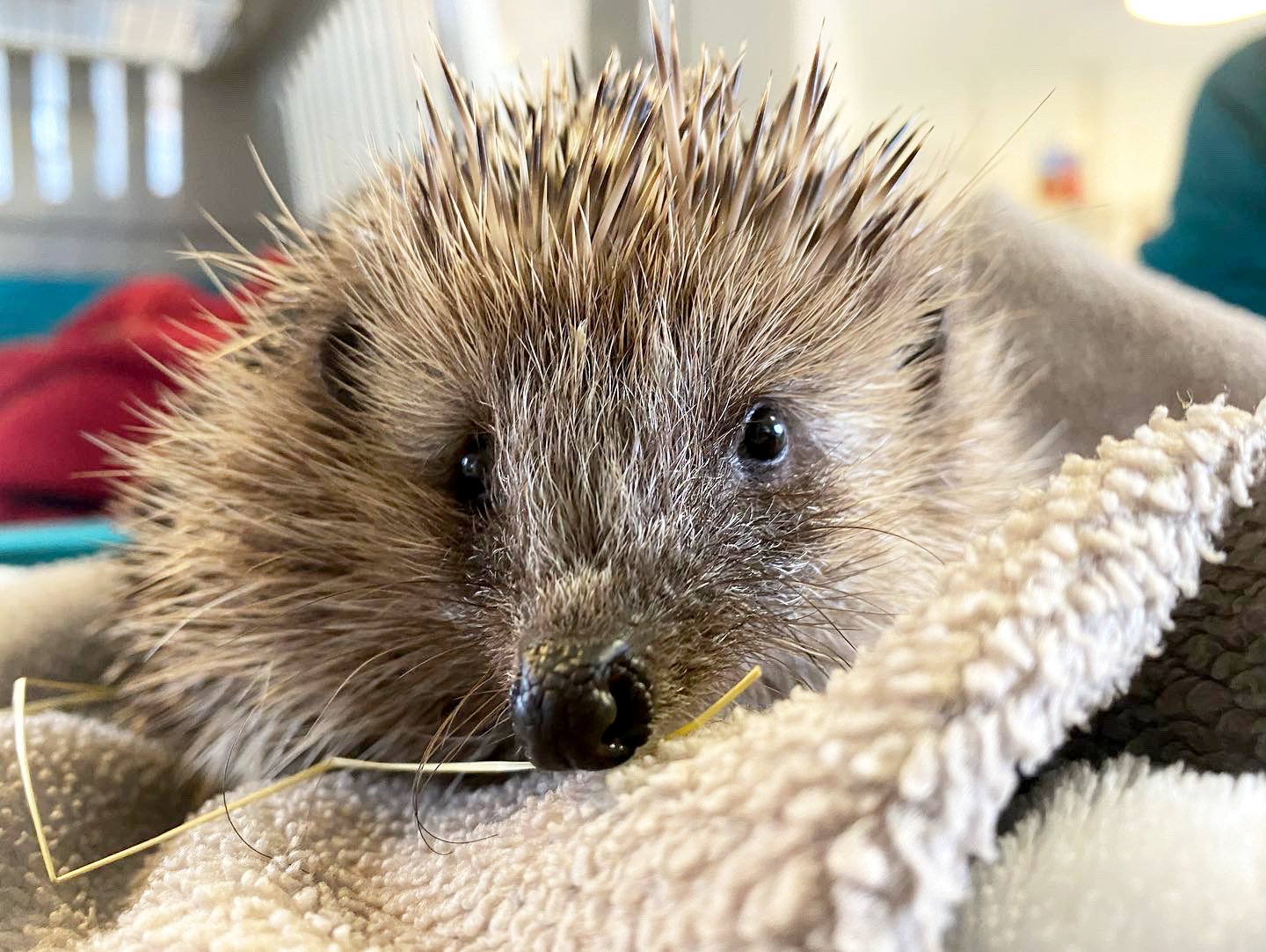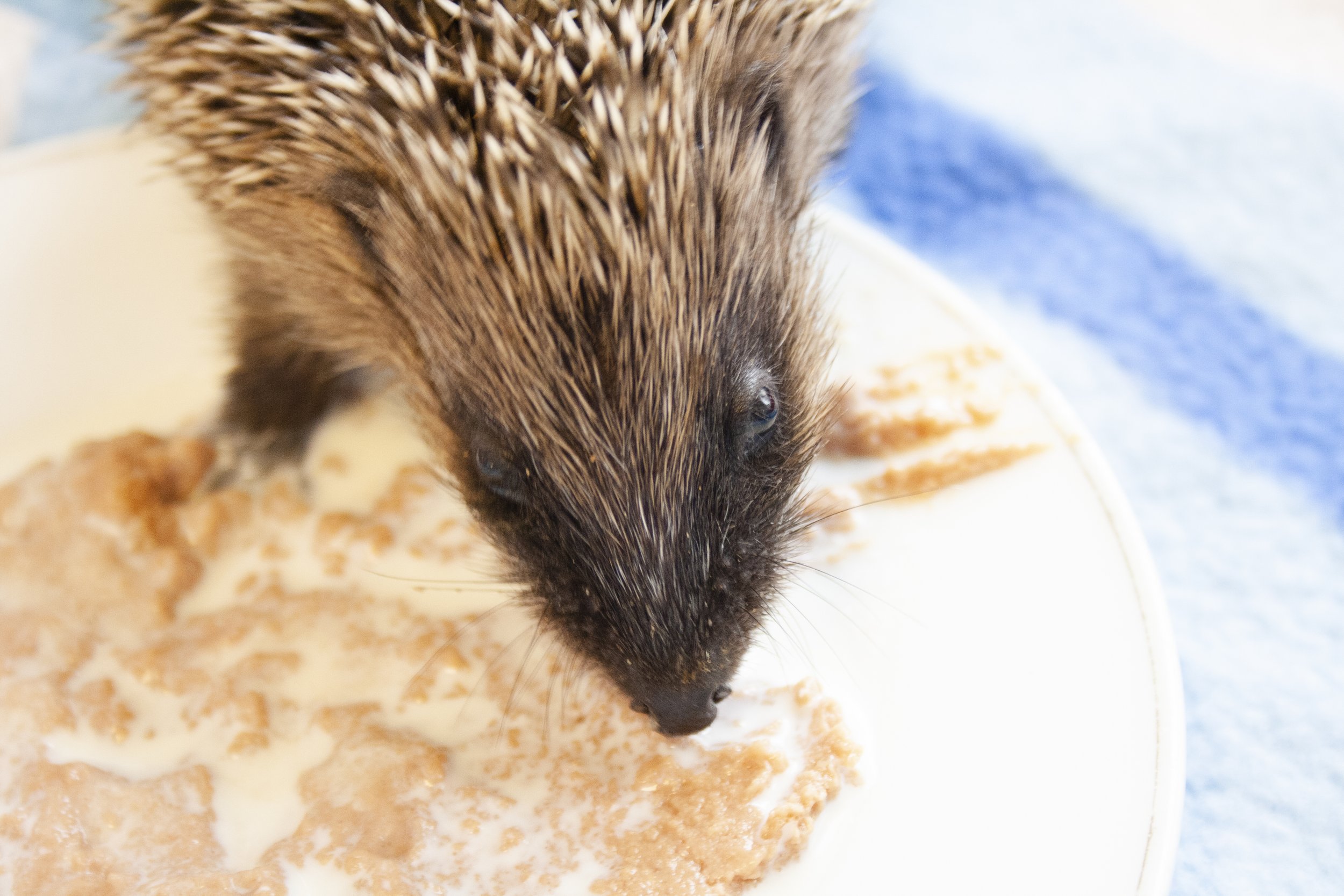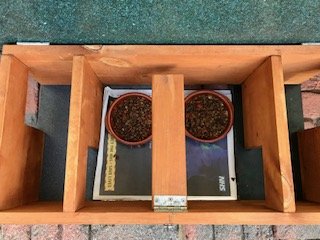
Feeding Hedgehogs
Providing a shallow dish of water and a bit of extra food for wild hedgehogs is a win-win; they get to have some support to grow big and strong, whilst you get to enjoy the sights and sounds of regular prickly visitors.
Supplementary Feeding
Sometimes hedgehogs struggle to find enough natural food in the wild to thrive, but the good news is we can provide a little extra food to support them.
There are several times throughout the year when hedgehogs particularly appreciate this supplementary feeding – during very cold and very hot weather, after hibernation, and during the breeding season.
It is a nice idea to provide food and water all year round though as you never know what little visitor might need it!
They will still be eating their natural diet of caterpillars, worms, slugs, beetles, and other yummy things, so the food you leave out is only to supplement this.
It is best for the hedgehog if you provide a balanced diet – no ‘treat’ foods! If you provide just the following you will be helping your hedgehogs become big, healthy adults:
A shallow bowl of water – the most important bit, especially during hot spells and when hogs wake up from hibernation
Dry food – hedgehogs love cat and kitten biscuits, eating the kibble helps keep their teeth clean too!
Wet food – meat-based hedgehog, dog or cat food (ideally loaf, pate, or in jelly)
What NOT to feed hedgehogs
In short, anything other than the above! They are wild animals and do not need ‘treats’. This is not an exhaustive list but these are a few common culprits:
Milk – they are lactose intolerant and it can be fatal to them
Bread
Mealworms / Sunflower Seeds / Peanuts – high in phosphorous and low in calcium; can cause metabolic bone disease. Peanuts also get lodged in the roof of their mouths
Human foods (biscuits / cake etc)
Eggs
Any live or dried insects / critters
Fresh or dried fruit / vegetables
Raw meat / offal
A hedgehog specific food that contains any of the above!
Feeding Stations
To make sure it’s just the hedgehogs that eat the food you leave out, why not make a feeding station like the ones pictured.
You do not have to make anything fancy, but good features of a feeding station include:
A tunnel or internal divider to stop larger animals such as cats eating the food
If it is not heavy, place a weight on top such as a brick to stop the station from moving around
Use a waterproof material, and if using wood make sure it is untreated wood
Make any openings around 13cm square, ensuring there are no sharp edges
Keep the station clean, using pet-safe disinfectant on the station and bowls regularly
Have a look online for ‘Hedgehog Feeding Station’ and you will see there are loads of ways you can design them, likely using things you already have!







